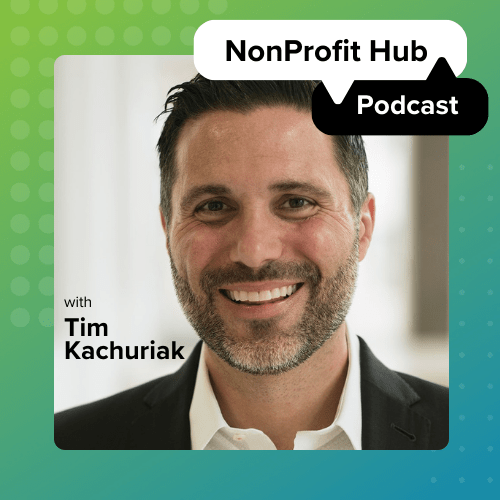The days are getting shorter, you’ve just finished the next email in your year-end campaign and you’ve finally finished putting together your amazing Kylo Ren halloween costume.
In the midst of the end-of-year preparation, don’t neglect one simple task that can set up your organization for a successful year—developing a budget.
Putting together a budget will help guide your spending and also plan for where your income will come from. It will help you think about your goals for the year and figure out the priorities for your nonprofit.
Creating your nonprofit budget isn’t as simple as copy and pasting last year’s numbers. Instead, it should be an event that your whole team buys into and forecasts where the money will come from and go during the next year.
As the calendar flips to November, now is a great time begin looking to the new year. Ali Maloy, a certified public accountant and the principal at Lone Tree Accounting, said a couple months before the end of your fiscal year allows you enough information to make grounded decisions.
“The best practice (to start developing your budget) is November 1. There’re only two months left of the year and you have a pretty good idea of your expenses for the year,” Maloy said.
When you begin drawing up a budget, start with the lowest level that makes financial decisions. Whether that’s a department or a team, have them develop their financial plans for the year. If you have department heads that oversee a budget, have them start thinking about the new budget on October 1 so you still have time to bring everything together.
If you’re a smaller nonprofit, Maloy said to start the conversation with the historical details between the executive director and financial manager. She recommends using a three-column spreadsheet (an online spreadsheet is even better so multiple people can collaborate). The columns should include the previous year’s budget, the current year-to-date actual numbers and a blank column for the next year’s budget.
Finally, when you prepare to build a budget, you need to break down the income and expenses. Maloy said she starts with categories such as general, fundraising and programs, but you will need to go further based on how your organization operates.
“You want to make sure you are budgeting at whatever minute level of detail makes sense for your organization,” she said. “It might sound like a lot of work, but it is worth it. Really, it’s a lot of work in the first year, but after that it is updating things and it’s not as big of a task.”
Creating a budget is a task filled with lots of details, planning and predicting the future. However, with the proper diligence, it doesn’t have to be guesswork. Maloy said the key to creating a more accurate budget is to look at each line individually and use historical data to set the budget for the new year.
If numbers increase or decrease dramatically, write a note on the spreadsheet that explains the rationale for the numbers chosen for the budget. These explanations will be useful when presenting the information to the board of directors and later in the year when comparing how the actuals measured up to the budget.
“If you take the time to go line by line and have a meaningful conversation about each line, you’re going to end up with a budget that is realistic,” Maloy said. “And if it turns out it is not realistic, you can explain the thought on why you budgeted it that way.”
After you’ve finished the entire budget, take a step back and see how all those lines fit together in the big picture. Hopefully, if you’ve done it right the nonprofit will be net positive for the year and built off the previous years.
One common misconception is that budgets have to balance the expenses and revenues. Rather than an expectation, developing a break-even budget should be an exception. Instead, nonprofits should budget for a surplus.
Maloy said nonprofits need to approach their financials like small businesses when planning their budget.
“In 99 percent of cases, you should be creating a budget when you end the year with a positive net income,” she said. “If you don’t make money, you don’t exist going forward.”
Once you’ve finalized the budget for the year, don’t just set it aside. Make sure everyone in your organization is aware of the budget and is behind the numbers.
Maloy suggested taking the budget to the finance committee on the board of directors to answer any questions and fix any mistakes prior to formal approval. If your organization doesn’t have a finance committee, discuss the budget with a few board members to get their feedback.
During the course of the next year, the budget should be presented along the year-to-date financials to the board of directors. If the board only meets quarterly, the executive director should keep tabs on the budget at minimum every month.
Maloy said nonprofits should also invest in a financial system that allows them to input their budget and compare it to up-to-date information. Otherwise, you’ll have to manually create budget-to-actual reports every time you want to examine your financial standing.
“It’s worth the added costs,” Maloy said. “If your organization is big enough to have a budget, then I think it is worth springing for the accounting system that can actually run reports dynamically with the budget in there.”
Everything that happens during the course of the year is predictable. Sometimes you’ll receive more grants than initially expected or a program might be cut or absorbed by another organization. This doesn’t mean that your budget is cooked and should be thrown away.
Maloy said when budget-altering events happen, create a financial forecast that will help project the rest of year.
“You can change (a forecast) whenever you want,” she said. “If things change significantly for an organization, don’t change your budget, but you can create a forecast on the new information.”
With these tips, you should be able to create a budget for your next fiscal year. And even if the new year has passed, Maloy said it’s not too late for you.
“Just because you’ve missed the window when you should have done this, doesn’t mean you should go without a budget for the new year,” she said. “You can put together a budget at anytime.”













